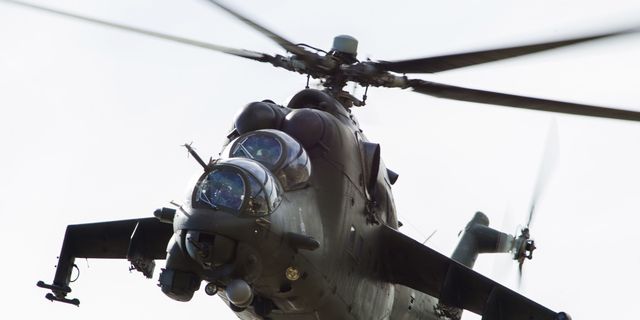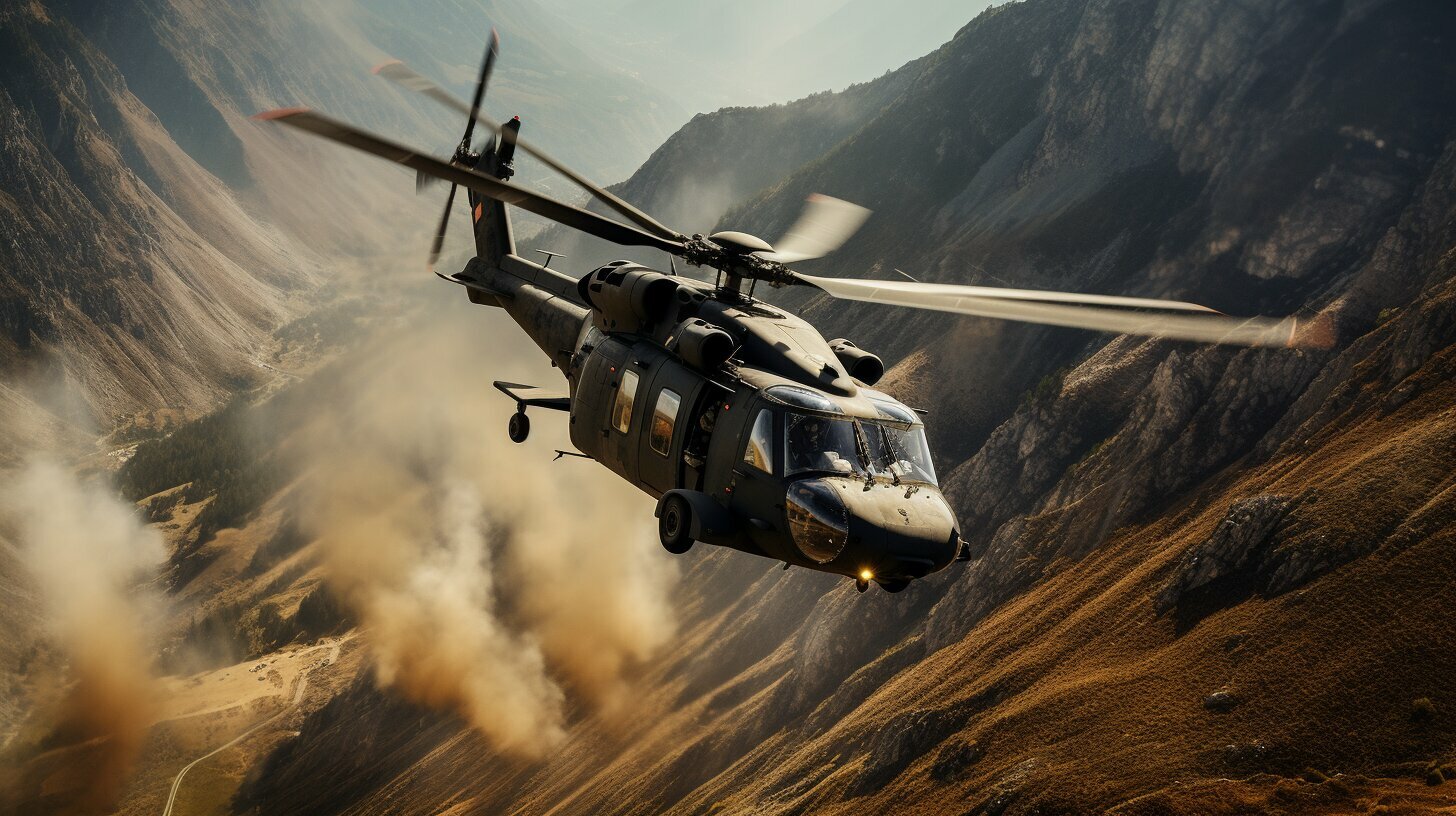
Challenges of Flight Control in a Compound Helicopter
A compound helicopter can achieve higher speeds, longer ranges, and better fuel efficiency than a conventional helicopter, while retaining the ability to hover and perform vertical take-off and landing (VTOL).
However, designing and operating a compound helicopter also poses significant challenges for flight control. In this article, we will discuss some of the main challenges of flight control in a compound helicopter and how they can be addressed.
What Is a Compound Helicopter?
A compound helicopter is a helicopter that has additional propulsion devices, such as propellers, ducted fans, or jets, to augment or replace the main rotor for forward thrust. Some compound helicopters also have wings or canards to provide additional lift and reduce the rotor power required at high speeds. Compound helicopters can be classified into two main categories: coaxial and conventional.
Coaxial compound helicopters have two rotors mounted on the same axis, one above the other, rotating in opposite directions. This eliminates the need for a tail rotor to counteract the torque of the main rotor, and allows for more efficient use of engine power. Coaxial compound helicopters typically have propellers or ducted fans at the rear or sides of the fuselage to provide forward thrust. Examples of coaxial compound helicopters include the Sikorsky S-97 Raider and the Kamov Ka-92.
Conventional compound helicopters have a single main rotor and a tail rotor, similar to a standard helicopter. However, they also have wings or canards to provide lift and reduce the rotor power required at high speeds. Conventional compound helicopters typically have propellers or jets mounted on the wings or fuselage to provide forward thrust. Examples of conventional compound helicopters include the Eurocopter X3 and the Bell V-280 Valor.
What Are the Challenges of Flight Control in a Compound Helicopter?
Flight control in a compound helicopter is more complex and challenging than in a conventional helicopter, due to the interaction of multiple aerodynamic components and the wide range of flight regimes. Some of the main challenges are:
Transition From Hover to Forward Flight
One of the most critical phases of flight for a compound helicopter is the transition from hover to forward flight, and vice versa. During this phase, the rotorcraft has to change its aerodynamic configuration and balance the forces and moments acting on it.
For example, in a compound helicopter with a pusher propeller, the propeller has to provide thrust for forward flight, while the main rotor has to reduce its collective pitch to avoid overspeeding. The tail rotor also has to adjust its thrust to counteract the yawing moment induced by the propeller. The pilot has to coordinate these changes smoothly and accurately to maintain stability and control.
One possible solution for this challenge is to use an advanced flight control system that can automatically adjust the rotor and propeller parameters according to the flight mode and speed. The system can also provide feedback and guidance to the pilot through the cockpit displays and controls.
Handling Gusts and Turbulence
Another challenge for a compound helicopter is to handle gusts and turbulence in different flight regimes. Gusts and turbulence can cause large variations in the aerodynamic loads and moments on the rotorcraft, which can affect its stability, performance, and comfort.
For example, in forward flight, a gust can cause a sudden increase or decrease in the angle of attack of the main rotor blades, which can result in a change in lift and drag. This can cause a pitch or roll oscillation of the rotorcraft, which can be amplified by the gyroscopic effect of the rotating blades. The pilot has to compensate for these oscillations by applying corrective inputs to the cyclic and collective controls.
One possible solution for this challenge is to use an active rotor control system that can sense and react to gusts and turbulence in real time. The system can modulate the pitch of each blade individually or collectively to counteract the aerodynamic disturbances. The system can also reduce the vibration and noise levels of the rotorcraft by minimizing the blade flapping and bending.
Managing Failures and Emergencies
A third challenge for a compound helicopter is to manage failures and emergencies that may occur during flight. Failures and emergencies can compromise the safety and survivability of the rotorcraft and its occupants.
For example, in a compound helicopter with a wing, a failure of one of the wing engines can cause an asymmetric thrust condition that can destabilize the rotorcraft. The pilot has to apply corrective inputs to the cyclic, collective, propeller, and rudder controls to restore balance and control.
One possible solution for this challenge is to use a fault-tolerant flight control system that can detect and isolate failures and provide backup or reconfigurable modes of operation. The system can also assist or take over the control of the rotorcraft in case of pilot incapacitation or loss of situational awareness.
Final Thoughts
The compound helicopter, with its blend of superior speed, extended range, and enhanced fuel efficiency, presents a remarkable evolution from the conventional helicopter, while maintaining the quintessential ability to hover and perform vertical take-offs and landings. Yet, the ingenuity of its design also ushers in a new set of complexities in the realm of flight control. This article has delved into these challenges, from managing the transition from hover to forward flight, coping with gusts and turbulence, to handling equipment failures and emergencies.
Our exploration has not only illuminated the hurdles but has also highlighted the innovative solutions at our disposal, such as advanced flight control systems, active rotor control systems, and fault-tolerant flight control systems. These technological advancements showcase the immense potential and resilience of compound helicopters and pave the way for future advancements.
As we continue to push the boundaries of aviation, the compound helicopter stands as a testament to the possibility of marrying improved performance with versatility. This fusion of benefits makes it a promising prospect in the evolution of rotorcraft. This exploration into the intricacies of compound helicopter flight control offers valuable insights and illuminates the exciting journey ahead in the world of aviation.







